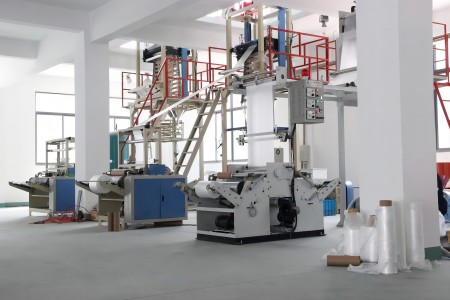The Fascinating World of PE Glove Manufacturing
Published on 2023/5/19

Share to:
The Fascinating World of PE Glove Manufacturing
In this article, we will take a closer look at the manufacturing process of PE gloves, including the equipment and materials used, the steps involved, and some of the challenges that manufacturers face.
If you've ever wondered how those handy disposable gloves are made, you're in the right place. The process of manufacturing PE (polyethylene) gloves is an interesting one that involves several steps, from mixing the raw materials to packaging the finished product. As one of the most widely used types of disposable gloves, PE gloves are used in a variety of industries, including healthcare, food service, and manufacturing. In this article, we will take a closer look at the manufacturing process of PE gloves, including the equipment and materials used, the steps involved, and some of the challenges that manufacturers face. So, whether you're a curious consumer or an industry professional, read on to learn more about the fascinating world of PE glove manufacturing.
Materials Used in PE Glove Manufacturing
The first step in the PE glove manufacturing process is to gather the necessary materials. The primary material used in the production of PE gloves is polyethylene, a type of plastic that is widely used due to its affordability, durability, and flexibility. In addition to polyethylene, other materials used in the manufacturing process include colorants, slip agents, and anti-blocking agents.
Colorants are added to the polyethylene material to give the gloves their distinctive colors, such as blue or clear. Slip agents are added to the material to reduce friction and make it easier to put on and take off the gloves. Anti-blocking agents are used to prevent the gloves from sticking together during the manufacturing process.
Once the materials are gathered, they are mixed together to create a homogeneous blend that will be used in the next step of the manufacturing process.
Preparing the Raw Materials for Production
After the materials have been gathered and mixed, the next step is to prepare them for production. This involves melting the polyethylene and blending it with the other materials to create a uniform mixture. The mixture is then fed into an extruder, which uses heat and pressure to melt the material and force it through a die.
The die is a specially shaped tool that determines the size and shape of the gloves. As the material passes through the die, it is cooled by a stream of air and forms a long tube of material. This tube is then cut into individual sections that will be used to create the gloves.
The Extrusion Process
The next step in the PE glove manufacturing process is the extrusion process. This involves feeding the individual sections of material through a series of rollers that flatten the material and give it the desired thickness. The flattened material is then cut into sheets that will be used to create the gloves.
The sheets are fed into a machine that uses a series of molds to create the glove shape. The molds are heated to a specific temperature, and the sheets are pressed into the molds to form the gloves. The gloves are then cooled and removed from the molds.
Creating the Glove Shape
Once the gloves have been shaped, they are trimmed to remove any excess material and to ensure that they are the correct size and shape. The gloves are then turned inside out and inspected for defects, such as holes or tears. Any defective gloves are removed from the production line.
After the gloves have been inspected, they are washed to remove any residual chemicals or debris from the manufacturing process. This ensures that the gloves are clean and safe for use.
Adding Finishing Touches to the Gloves
The final step in the PE glove manufacturing process is to add any finishing touches to the gloves. This may include adding embossed textures for better grip, or applying a powder coating to the gloves to make them easier to put on and take off.
The gloves are then packaged and prepared for shipping. They may be packaged in large boxes for bulk orders, or in smaller boxes for individual use. The packaging may include information on the size and type of glove, as well as instructions for use and disposal.
Quality Control Measures in PE Glove Manufacturing
Quality control is an important aspect of PE glove manufacturing. Manufacturers use a variety of techniques to ensure that the gloves meet their quality standards. This may include visual inspections, leak tests, and microbiological tests to ensure that the gloves are free from contaminants.
In addition to quality control measures, manufacturers may also implement safety protocols to protect workers from exposure to chemicals or other hazards during the manufacturing process.
Packaging and Shipping the Gloves
Once the gloves have been manufactured and inspected, they are packaged and prepared for shipping. The gloves may be shipped directly to customers or to distribution centers for further distribution.
During the shipping process, the gloves are carefully packaged to prevent damage or contamination. They may be shipped in temperature-controlled containers to ensure that they remain stable during transport.
Common Challenges in PE Glove Manufacturing and How to Overcome Them
PE glove manufacturing can be a complex process, and manufacturers may face a variety of challenges during production. Some common challenges include variations in material quality, defects in the gloves, and issues with equipment.
To overcome these challenges, manufacturers may implement quality control measures, perform regular maintenance on their equipment, and invest in new technology to improve the manufacturing process.
Conclusion and Future of PE Glove Manufacturing
In conclusion, the manufacturing process of PE gloves is a fascinating one that involves several steps, from mixing the raw materials to packaging the finished product. Manufacturers use a variety of techniques to ensure that the gloves meet their quality standards and are safe for use.
As the demand for disposable gloves continues to grow, manufacturers are investing in new technology and processes to improve the efficiency and sustainability of the manufacturing process. This includes using recycled materials and implementing more sustainable manufacturing practices.
Overall, the future of disposable PE glove manufacturing looks bright, and we can expect to see continued innovation and growth in this important industry.


 WhatsApp
WhatsApp
Send us your message
You can send an email asking for the price and detailed information of this product. We will reply you as soon as we receive your email